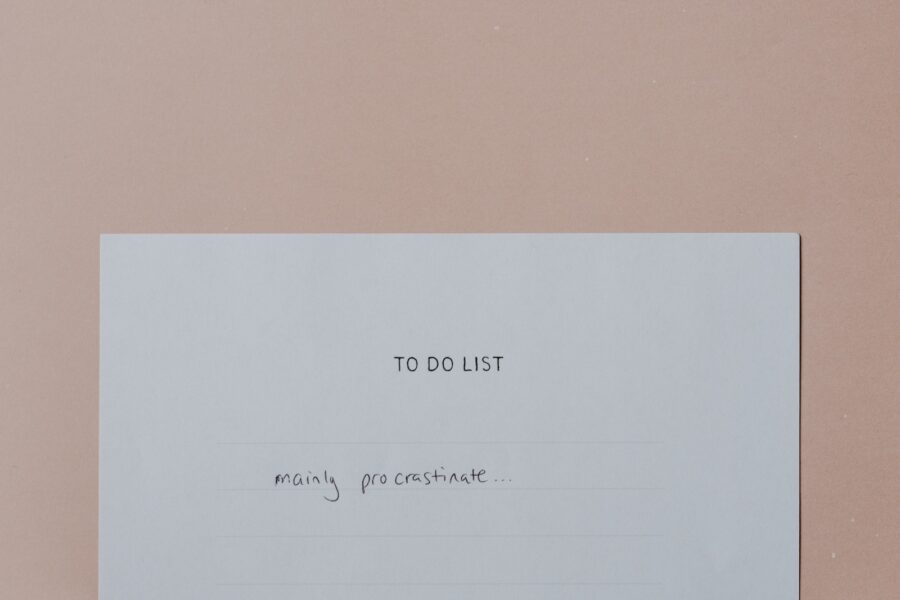Are you finding yourself spending more time procrastinating than being productive? In this article, we will take a look at the connection between procrastination and burnout, and explore ways to navigate this prevalent issue.
We all procrastinate. Need to file your personal tax return? That can wait till early January. Updating your investor slides? That sounds like a Friday job.
But have you noticed procrastination seeping into different tasks more? Like the grab-bag packet of crisps that’s become part of your evening wind-down? Over and above the end-of-year energy slump?
Have you experienced chronic fatigue or tiredness? A consistent inability to focus on the task in hand? That feeling of being rundown? As well as realising you’re simply not operating anywhere close to your full potential? Worse, you’re operating at around 40% on a good day.
Could you be closer to burnout? Burnout is a state of chronic mental fatigue, where you’ve got caught on the busy treadmill of doing to a point of mental exhaustion. In our busy and always-on lives, it’s easy to find ourselves here – when it’s too late. We run ourselves into this chronic state of procrastination, before realising we’re steps away from burnout, which can ultimately lead to more acute mental health risks.
As an entrepreneur working with successful business owners and executives, I see this so often. And, in my experience, the procrastination on autopilot is often rooted in not making space to pause, rest and replenish. We push through, wearing our busy-ness and growing disconnection like a badge of honour, overusing the exploding head emoji without bringing awareness to just how unhealthy our choices are.
How can we break the procrastination trap and create working – and living patterns – that prevent burnout?
- Get honest about where you are in the procrastination cycle
The challenge with burnout is that it catches us off-guard. We’re often so busy white-knuckling our way through the week, the month, we don’t realise how entrenched our own toxic behaviours and patterns have become.
The first step to breaking this cycle is admitting where you are within it. Have you noticed you’re putting more things off? Are your levels of distraction getting in the way of things you want to do? Are you waking up with a sense of overwhelm before you’ve even got out of bed? If any of these sound familiar, the chances are, you’re skating around the edges of burnout. So where do you go from here?
- Simplify your priorities
Take an honest look at your schedule, your to-do list, your Trello – whatever you use. Assess what’s actually important and what’s urgent. It’s that saying, “If everything is a priority then nothing is.” Set the priorities by taking non-essential tasks out of your calendar. See how much more efficient you are when you ruthlessly prioritise.
- Ramp up your support system
I don’t want to generalise but again, I consistently see how reluctant successful clients and colleagues are at delegating. Even when they’re aware certain tasks are not playing to their skills sets. It could be HR systems for your team. It could be payroll. It could be developing the LinkedIn content plan you swore you were going to do three months ago.
Look at the flexible support available to you and outsource tasks that take up more headspace and energy than they return. Working with a virtual assistant, for example, could give your Friday afternoons back as you’re not wrapped up in admin. Aim to make time by doing this so you can give more energy to the things that light you up – even if it’s an extra hour in the gym or a round of golf with a client.
- Make space for white space
At the start of my career, I remember reading about successful entrepreneurs who actively scheduled in thinking time. To do nothing but stare out the window and think. Or go for a walk or hike. Either way, they were replenishing their mental and creative reserves simply by doing nothing.
It’s something I’ve always built into my work week as an essential rather than a luxury. It’s in these quiet moments I get the idea for my next business. I work out how to resolve a team issue. I figure out where I can step up to support my partner in her career.
This goes against the grain of our culture of paranoid productivity and social media metrics. But scheduling in downtime – dare I say rest? – is essential to building a more sustainable – and sustaining – career and way of working.
It’s not about being a mindfulness expert or Burning Man competitor. Rather being able to bring awareness into your day-to-day patterns can help you better understand where you’ve fallen into a less-than-healthy habit. Especially if it’s one that could ultimately lead to burnout and a longer-term mental or physical health issue. And that by allowing more space into your week, you get to reclaim control of your time, your focus, your impact.

Sam Wilson
Sam Wilson is the co-founder of Virtalent, the UK's fastest-growing VA network, helping busy business owners get more done. A remote working and entrepreneurial champions, he founded Virtalent in 2013 with his partner Ellie.


